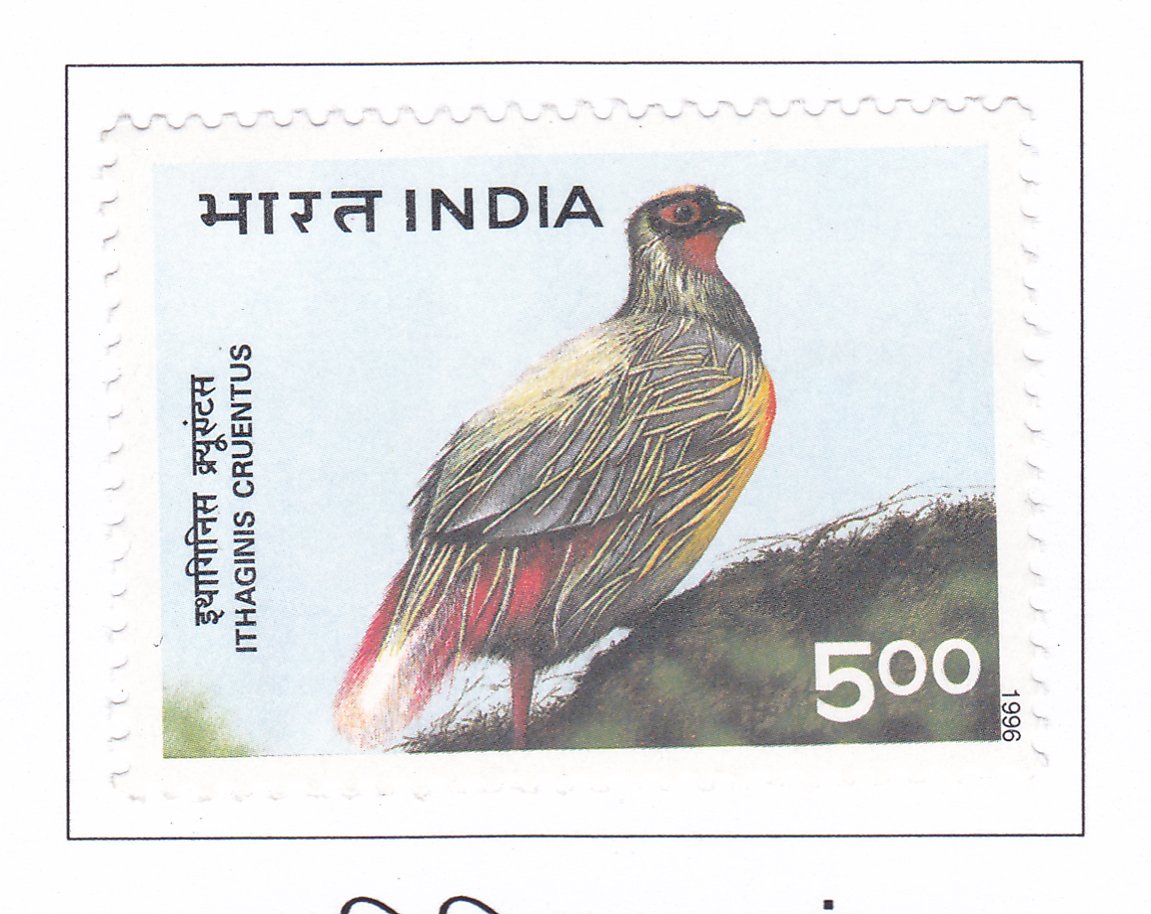Himalayan Ecology – Blood Pheasant (Ithaginis cruentus)

Technical Data
| Stamp Set | Himalayan Ecology |
|---|---|
| Date of Issue | May 10, 1996 |
| Denomination | Rs. 5 |
| Quantity | 1,000,000 |
| Perforation | comb 13½ x 13¼ |
| Printer | Security Printing Press, Nashik |
| Watermark | No Watermark |
| Colors | Multicolor |
| Catalog Codes |
Michel IN 1503I Stamp Number IN 1563 Yvert et Tellier IN 1301F Stanley Gibbons IN 1664 |
| Themes | Animals (Fauna) | Birds | Pheasants |
Table of Contents
Himalayan Ecology
The Himalayan mountain range’s unique ecological significance is beautifully captured in this set of special postage stamps by India Post. Here’s a detailed description of the second stamp in the series:
Ithaginis cruentus (Blood Pheasant)
- Description:
- Appearance: The Blood Pheasant is striking with its bright red and black face, streaked gray above, a yellow crest, and apple-green plumage below with yellow streaks. Its upper breast, wings, and tail are crimson. The female has a rich brown color with scarlet around the eyes.
- Behavior: This bird is gregarious and a strong runner, rarely taking flight. It feeds in open clearings and can become almost tame, which makes it vulnerable to predators.
- Habitat: It inhabits steep hill forests, bamboo, rhododendron, and juniper scrub, often in snow-covered areas.
- Miniature Sheet Background:
- Laspa Valley: The miniature sheet background features the Laspa Valley, highlighting the natural habitat of the Blood Pheasant and its surroundings.
- First Day Cover:
- Bhyundar Ganga: The first day cover shows the Bhyundar Ganga, which originates from the Tipra glacier at the base of Rataban and Ghouri Parbat peaks. The river flows through the Valley of Flowers and merges with the Alaknanda at Govind Ghat, passing through mixed temperate deciduous forests.
Significance of the Stamp
The Blood Pheasant, with its vivid plumage and unique habits, adds to the rich biodiversity of the Himalayas. This stamp aims to raise awareness about the ecological importance of the Himalayan region and the need for conservation efforts to protect its diverse flora and fauna. The depiction of the Blood Pheasant on the stamp serves as a reminder of the delicate balance of this unique ecosystem and the impact of environmental changes on its inhabitants.
